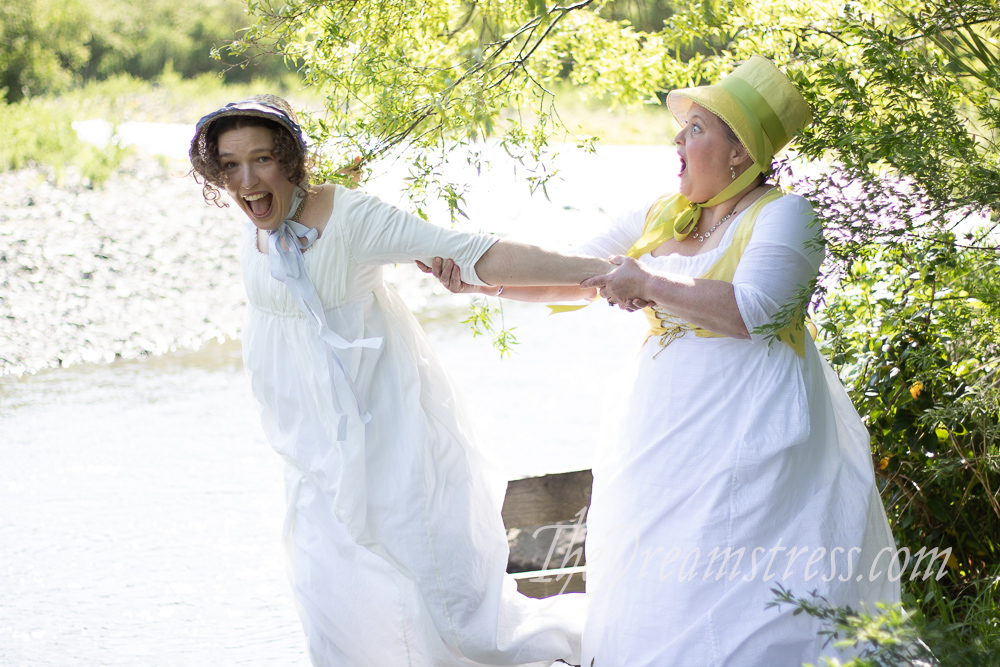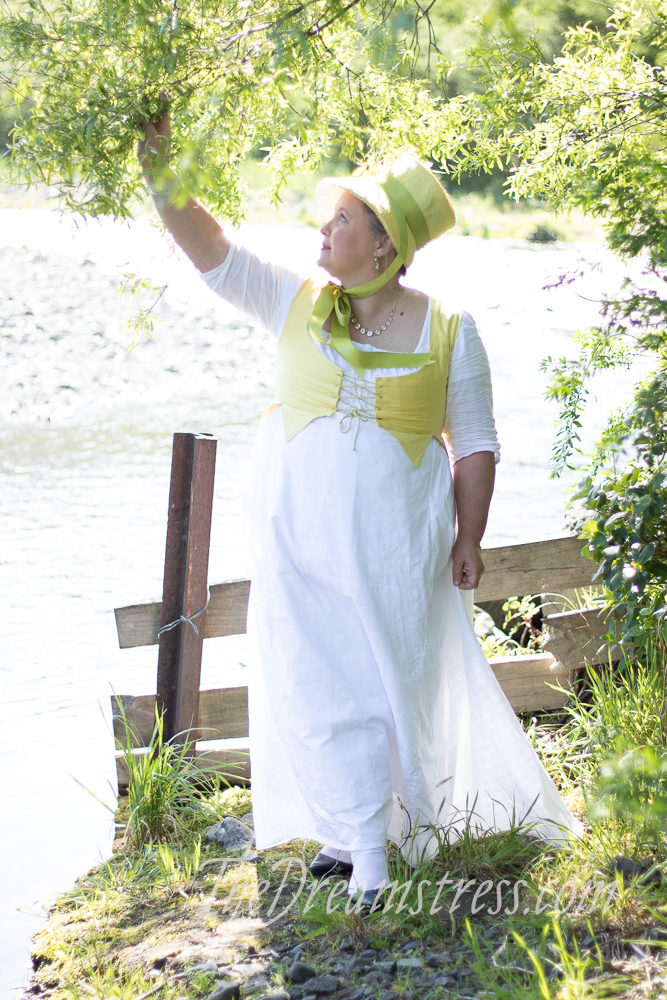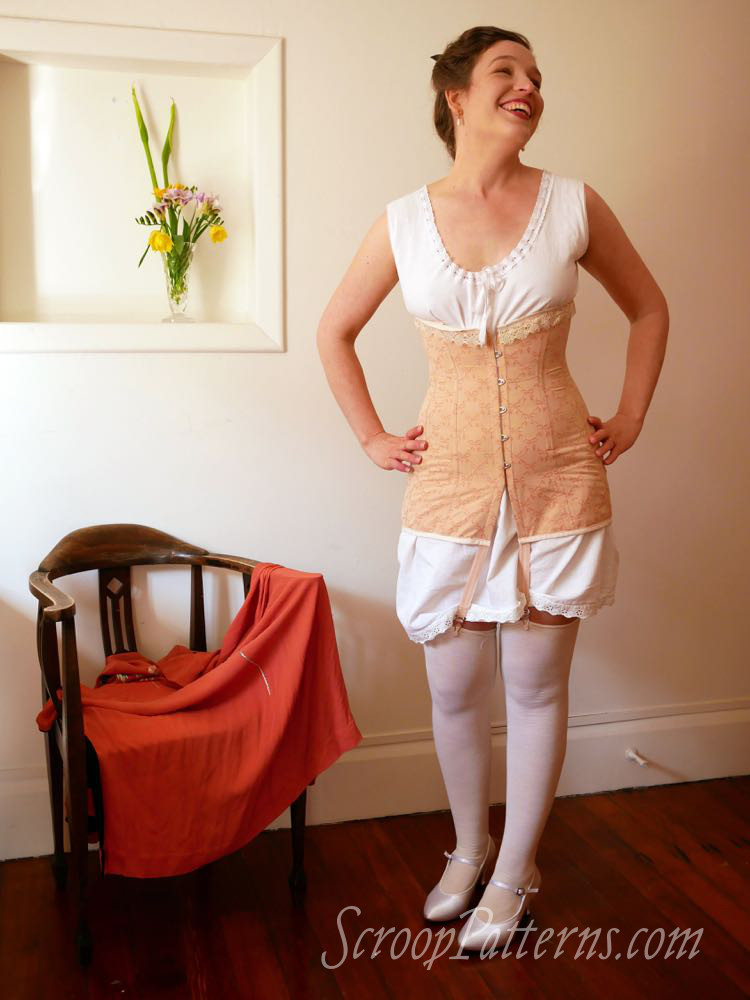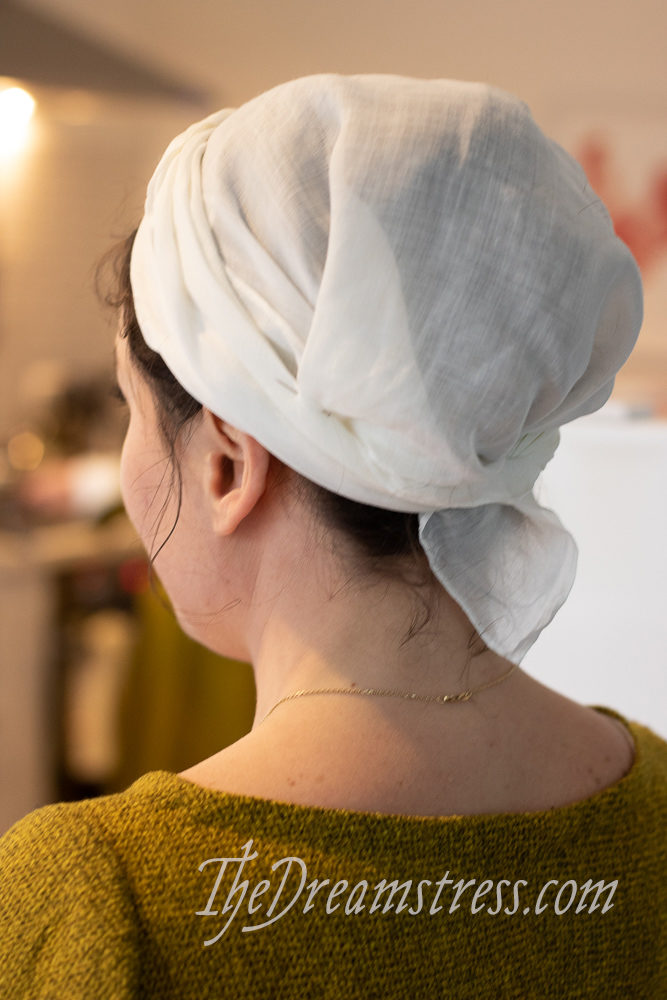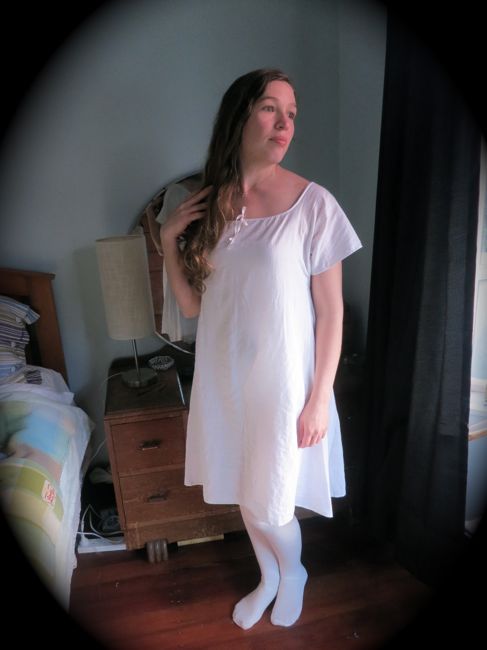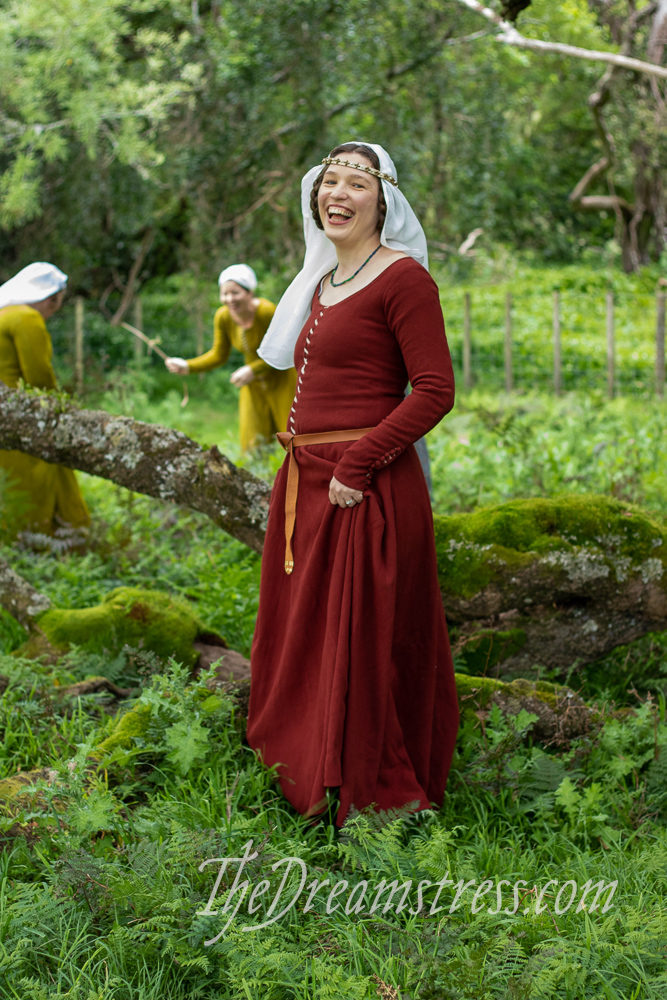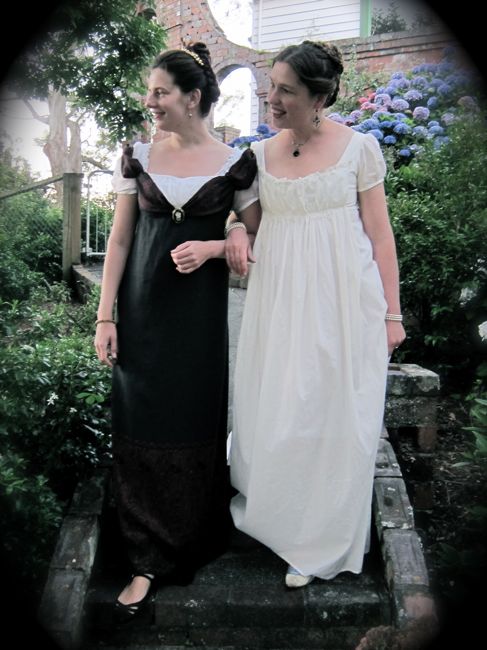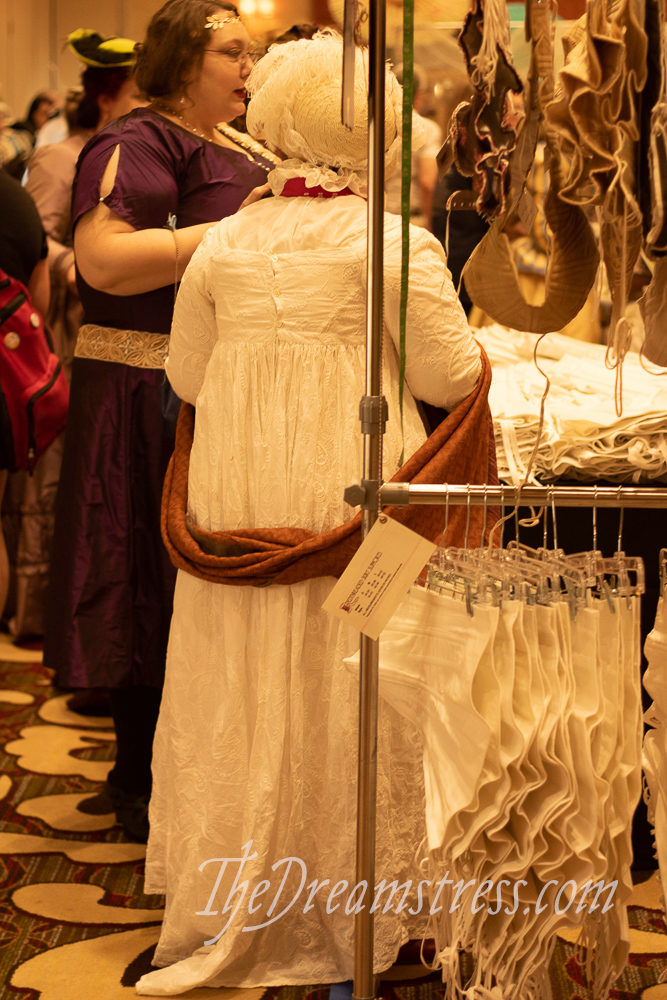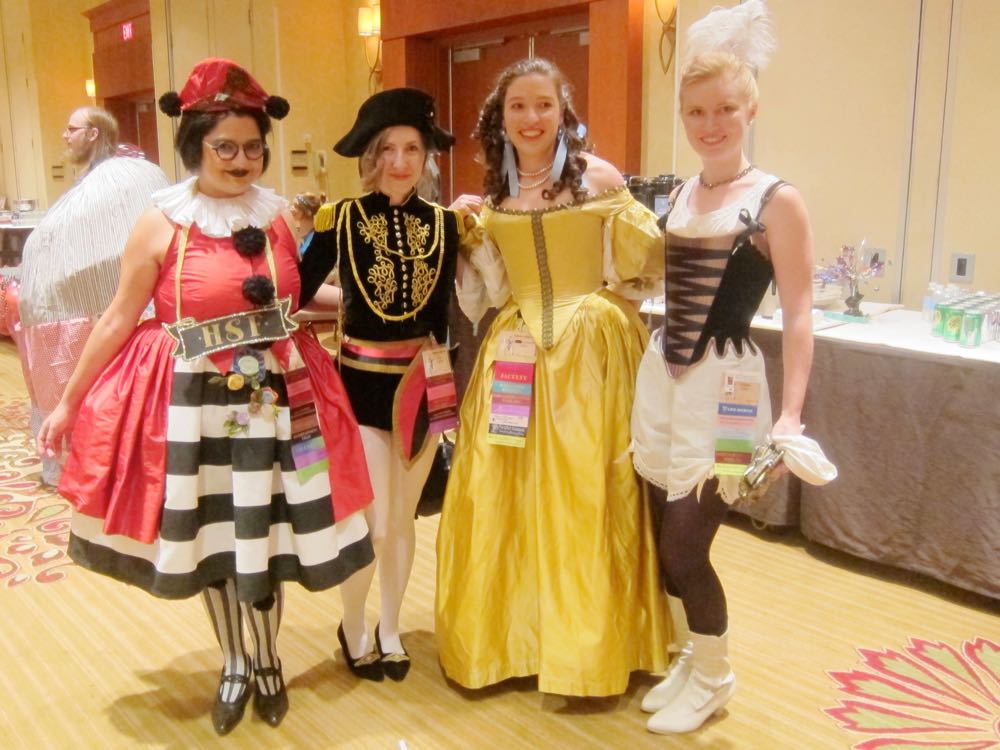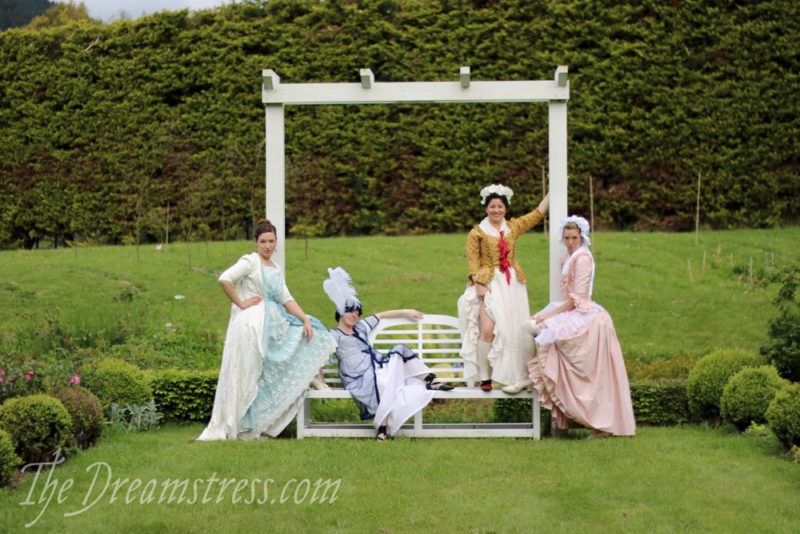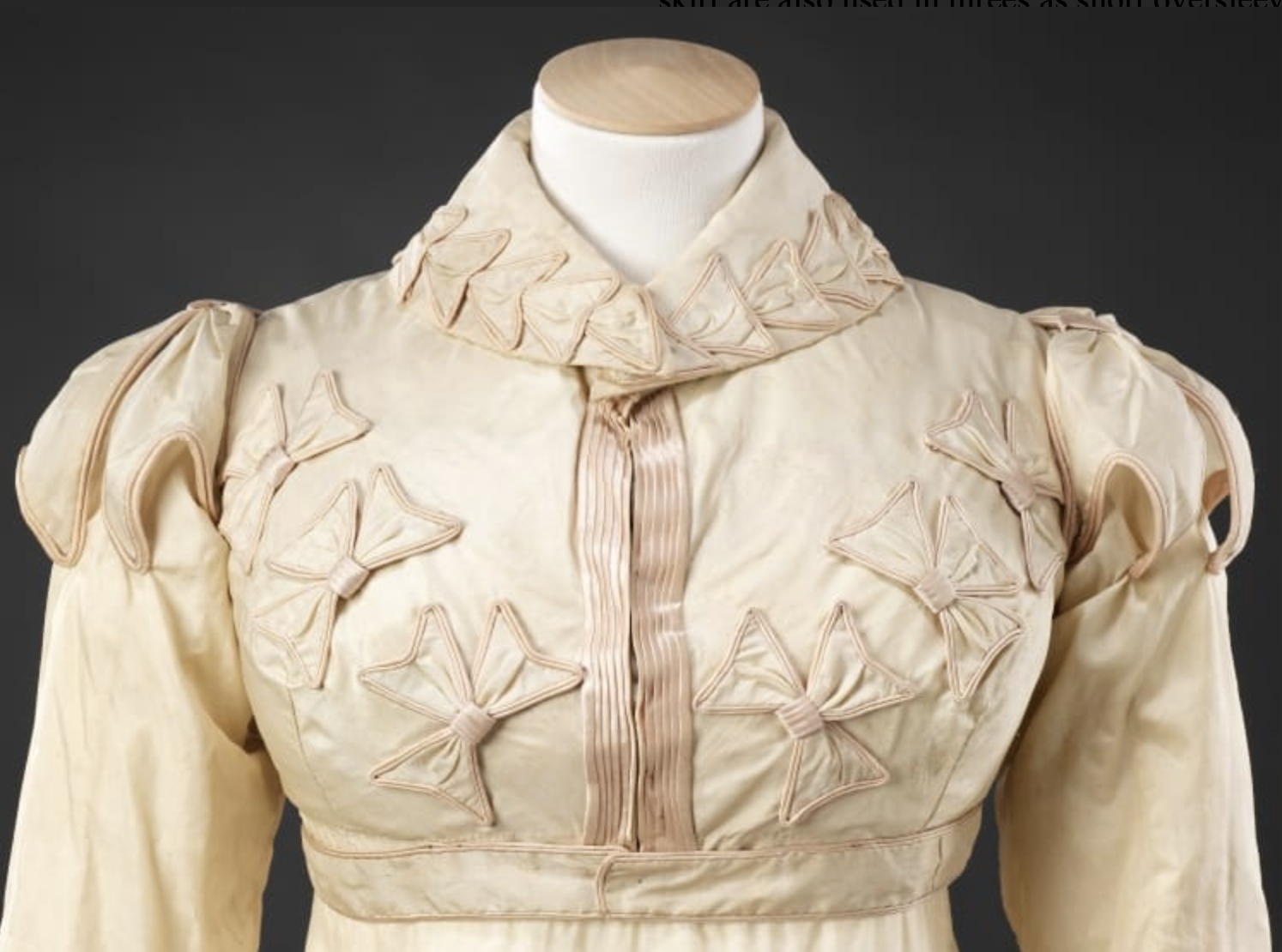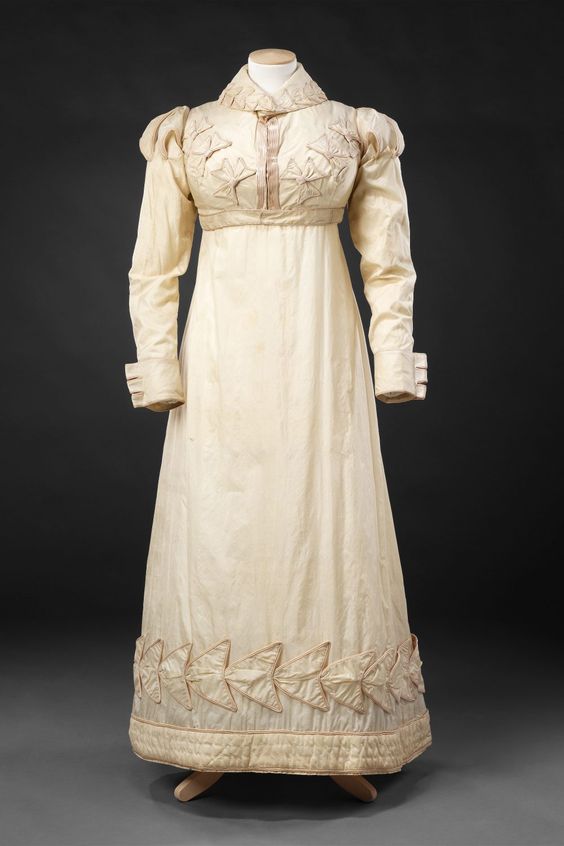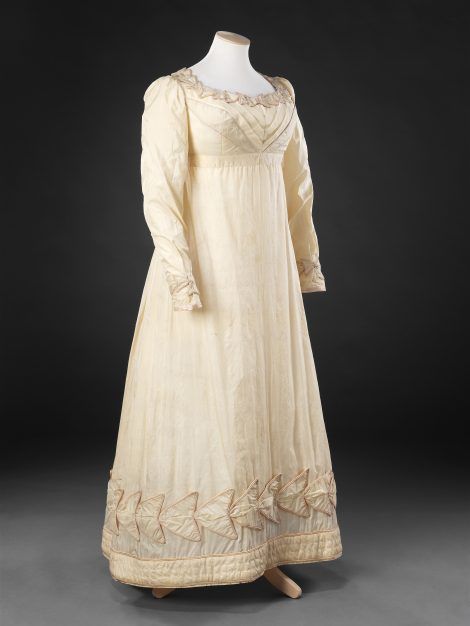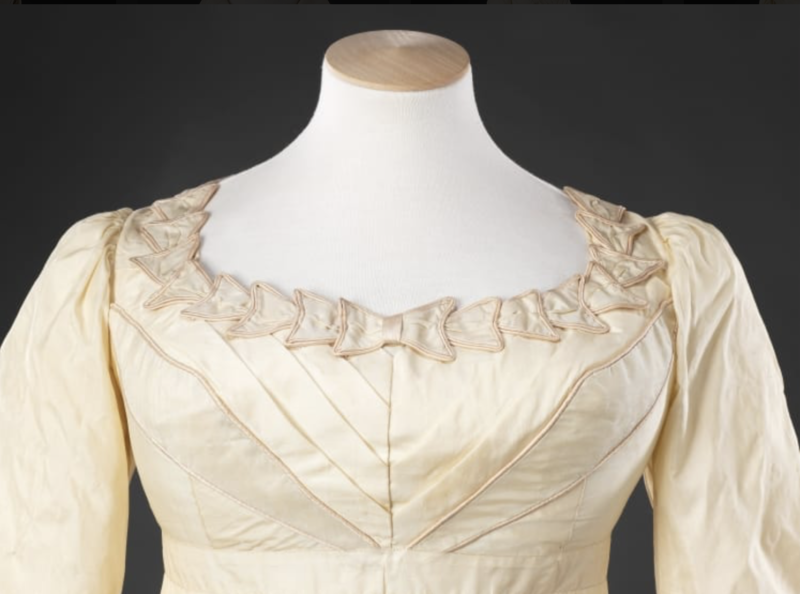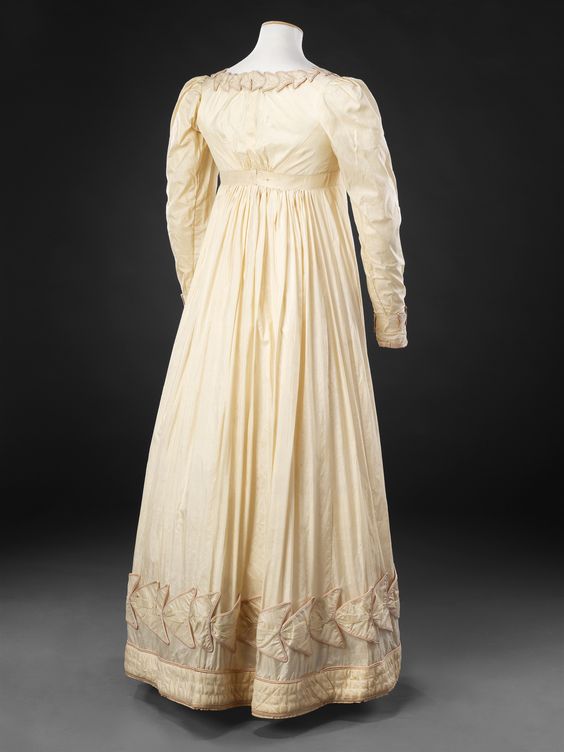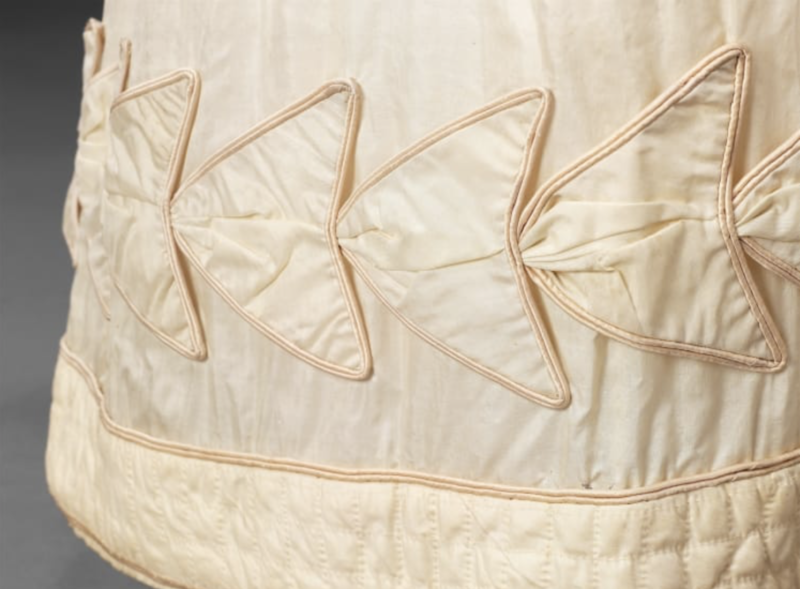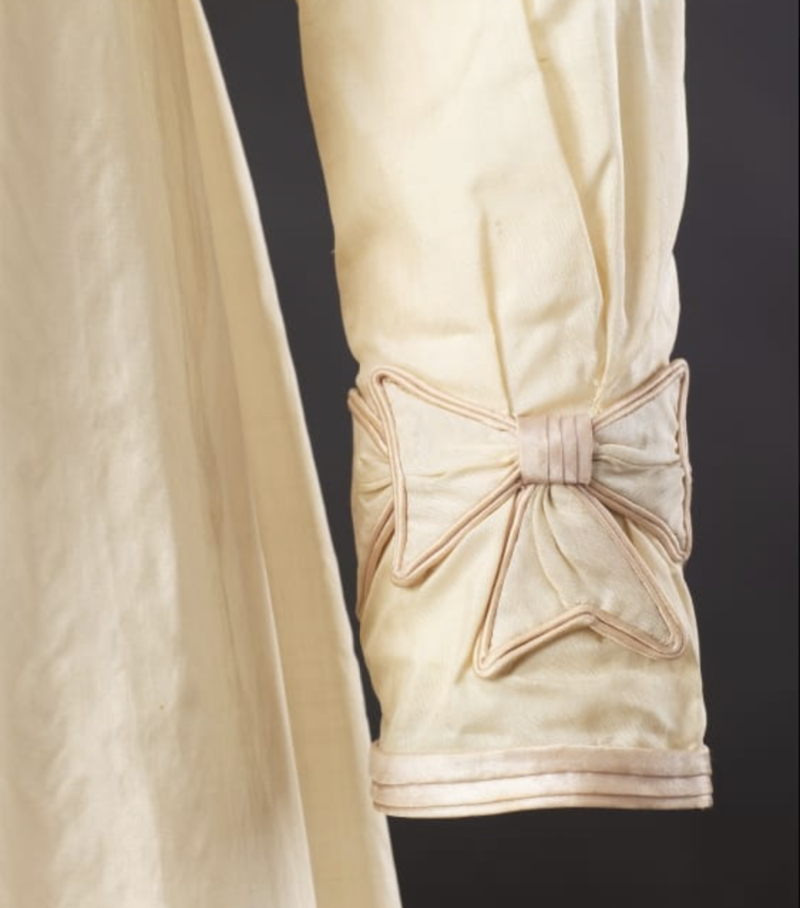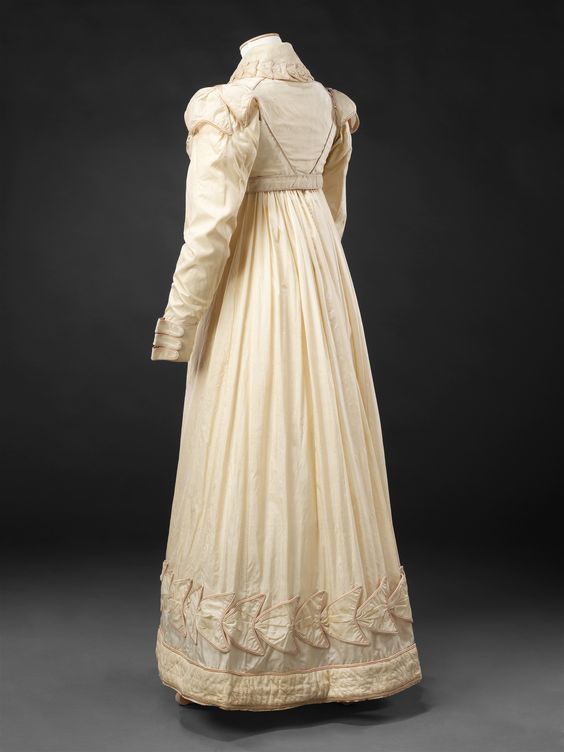In my last post, I discussed some ways to get started in historical costuming: different strategies for tackling your first makes, and where to get help with making.
But once you make a thing, you need a place to wear it! And that can be hard – especially if you don’t live somewhere with a lot of historical costume themed events. (I know all about this – NZ is fancy dress party central, but historical costume events are thin on the ground…)
A lot of people get started making historical costumes because they have a specific event to go to, and want to be dressed up. If that’s you: you’re sorted! Just talk to other people at the event, and you’ll probably learn about more events to wear your historic costume to.
A costume event is how I really got started in historical costuming: I made outfits for myself and a friend to wear to the SF Bay Area Renaissance Faire.
However, I went for 5 years between my 16th c Flemish outfit for a Renaissance Faire, and my next serious bout of historical sewing.
What prompted the next bout? An exhibition of impressionist paintings, and a chance to give a talk on the fashions in them. Between them I didn’t have a lot of events, and without a reason to wear costumes, it was hard to be motivated.
I still struggle to find motivations to costume if I don’t have an event to wear the costume to – and that can definitely be something that
So here’s some ideas for events & places to wear your costume to.
Conferences, Balls, and other big costume events
This is the obvious one. There are tons of things specifically designed for costumers to show off their stuff!
In the US & Canada there’s the Louisville Jane Austen Festival in Kentucky, a number of events at Colonial Williamsburg, Costume College in LA, and Costume Con (which travels, and will be in Montreal in 2020), plus numerous Civil War Era reenactment events, and lots more.
In the UK & Europe there’s the Jane Austen Festival in Bath, Fêtes Galantes at Versailles, Fête Napoleon III at Ville Vichy, Carnivale in Venice with historical events, and numerous other balls and festivals
In Australia there is the Australian Jane Austen Weekend (now becoming a more general historical weekend – and the organisers hold other balls and events) in Canberra, and the Abbey Medieval Festival in Queensland.
Those are just the ones I know off the top of my head, as someone who doesn’t live in those countries and is extremely unlikely to ever attend any of the out-of-NZ events in the future…
In New Zealand there is the Art Deco Festival in Napier and the Oamaru Victorian Heritage Celebrations.

Costume specific groups
Some areas have active local costuming guilds, like the Greater Bay Area Costumers Guild, Costumer’s Guild West, the Oregon Regency Society, etc., all of which throw their own events.
There are also costume-friendly dance events, like PEERS in the SF Bay Area.
Use google, pay attention to event listings in your area, and hopefully you’ll find one.
Historical villages, museums, and other history themed places that welcome costumers
Many areas have historical villages and or historical house museums, and many of these places are happy to have people visit in costume – and may even let you in to special areas to take photos if you come in costume.
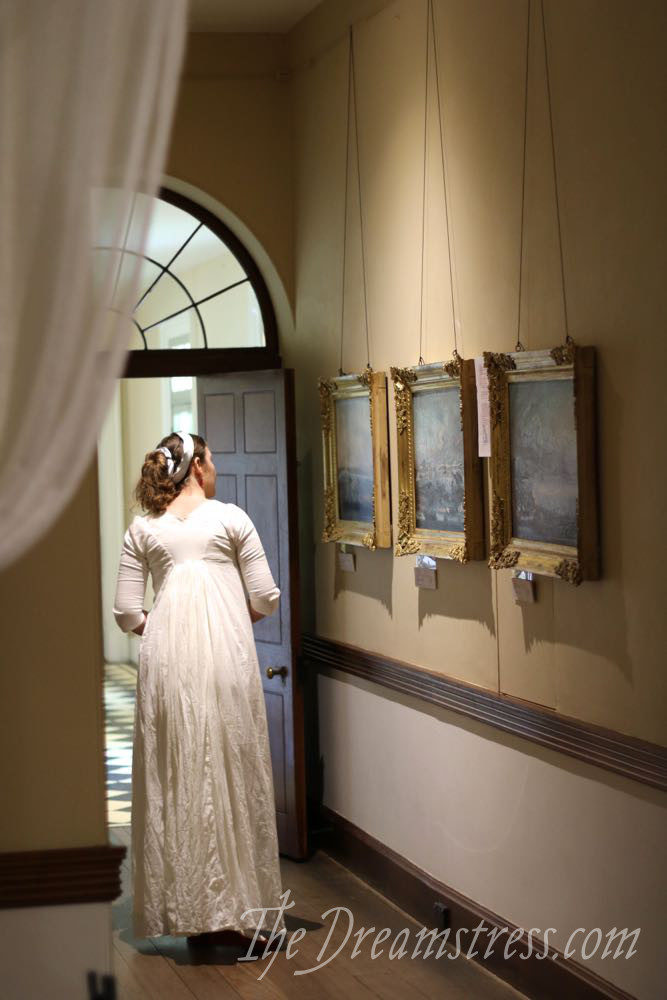
Museum exhibits that match your costume in theme are also fun places to go in costume. Think 1860s-80s outfits to an Impressionism exhibition, 15th & 16th century to a Renaissance exhibition, or think a little more out of the box, and wear 18th century & Regency to a Pompeii exhibition, as if you were seeing the art & artefacts shortly after they were first rediscovered.
Call ahead to check that costumes are allowed before you wear them to a museum/historical house/private garden. Some museums and parks specifically forbid costumes, and some exhibitions are so popular that they have to deny costumes, because they would be distracting and slow down the flow. Read more about the ettiquette of wearing historical costumes in public here.
Film Premiers
Dressing up in theme for historical films is pretty common in some areas – and some theatres even encourage it for premiers.
At least two local theatres did dress-up (or dress-up-allowed) events for the premier of Downton Abbey – I went to one and wore my 1913 lounging pyjamas.
Events like these are a great place to meet other costume enthusiasts. Just talk to anyone else who is dressed up, and you might make some new friends to go to events with.
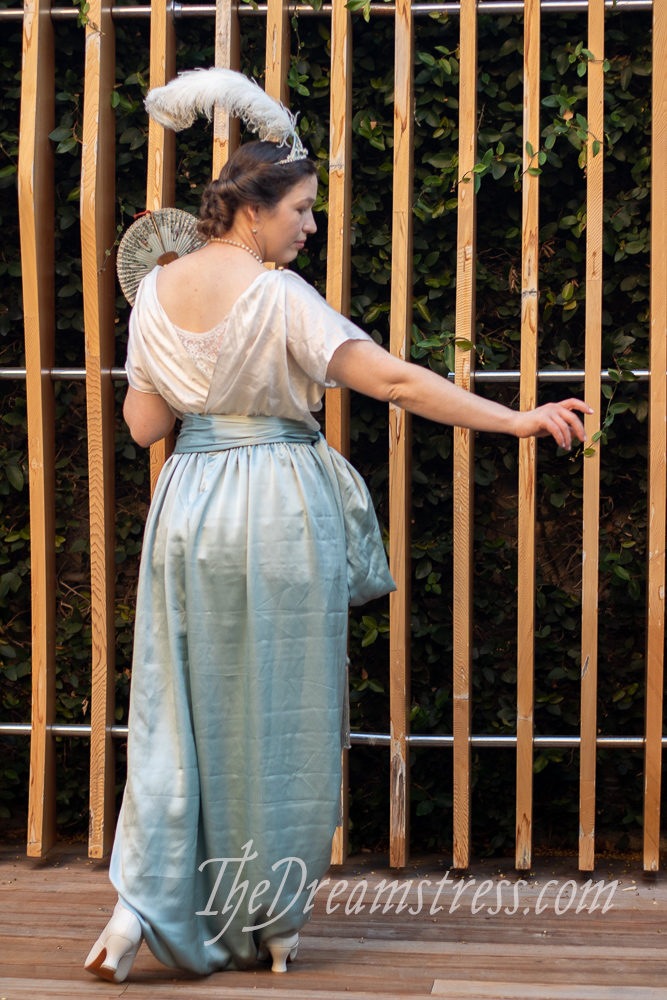
(pro tip: be sure to remove any hats or big feathered headpieces before the movie starts!)
Create your own events
This is mostly what I do!
For years I costumed primarily for photoshoots – I turned the act of taking photos and documenting the outfit into my ‘event’. All I needed was me, and a photographer (aka. Mr D, who isn’t a photographer but is willing to try for me). Some costumers do it with a tripod.
I also threw some bigger costuming events: balls and picnics that were open to the public. If you are going to do this make sure you’re familiar with your local laws around throwing a public event, and serving food, alcohol, etc. It’s a lot of work, and a lot of money, and you have to have a way to advertise it. I met some amazing, wonderful people who are still dear friends doing this.
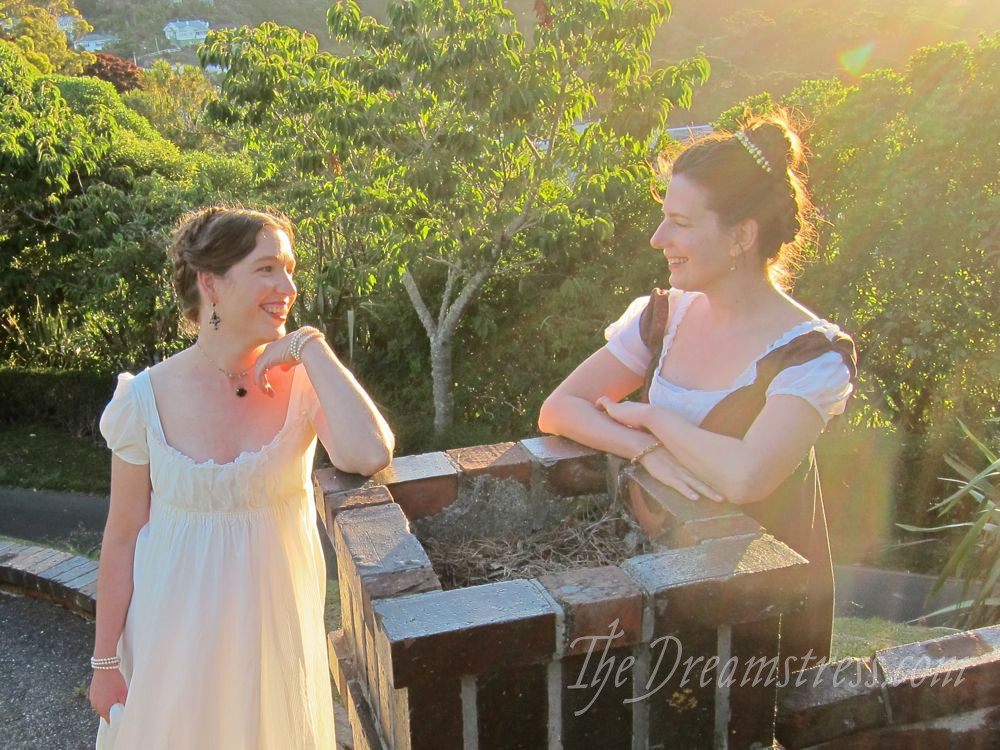
I’m just not up to that amount of work and stress anymore, so I don’t organise public events, but I try to go to the ones other people organise, and support them.
Now, I’ve found local costuming friends, we do smaller private events, which are much less stressful, which brings me to…
Where to find fellow historical costumers to do stuff with you
Start with all the facebook groups I mentioned in my last post! Ask if there is anyone local to you in them. You may even find a local group.
If your own area doesn’t have a dedicated costuming group, think about things that are historical-costume adjacent, and you may find other people in them who will do historical costuming stuff with you.
Many forms of dancing are vintage and historical clothes friendly. Join a dance group, and you’re likely to meet people who like to dress up, and find out about events where you can. Swing dancing is great for 1920s-50s. Contradancing is basically what Jane Austen was doing. Some ballroom dance groups are historical costume friendly.

Almost all historical groups are good bets. Historical architecture aficionados have some people who want to dress in the clothes of the era, historical military groups often do reenactments, and are interested in the wider society of the time. Etc. etc.
Most of my local historical costuming friends are people I met through standard sewing classes. They are people who are creative, and like making things, and like working with fabric. Join sewing groups, and you may find that many people who have only previously sewn modern clothes have secretly dreamed of dressing like Jane Austen, or having a complete outfit for a Medieval fair.
Hopefully these tips will help you find some friends to costume with!
Just keep in mind that no one is obligated to be your friend just because you share the same niche hobby, nor are you obligated to be anyone else’s friend. The most important thing about my costuming friends is that they are people who I enjoy spending time with. I’d like them if they weren’t historical costumers, but it’s even better that they are.
There are costumers I’ve met who I just didn’t gel with: they are lovely people, they make lovely things, I totally respect them and their work, but when we try to hang out we just end up saying “ummm” at each other while we try to think of things to talk about.
Don’t be discouraged if you hit a few dead ends meeting costume people: eventually you will find ‘your’ people.



